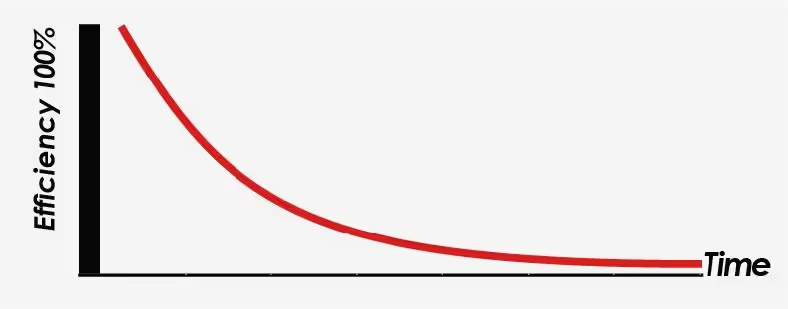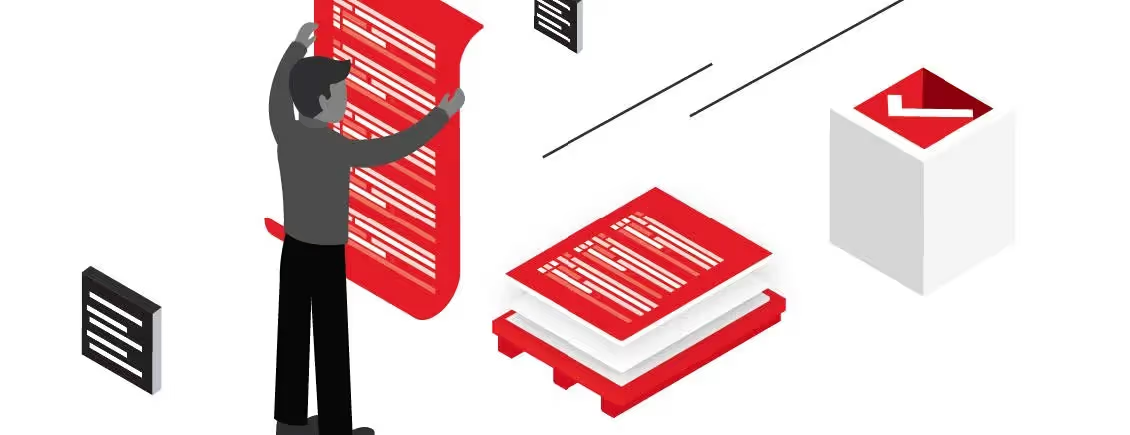Best Practices for Proofreading Manually

Not ready to automate? Minimize risk by adopting these best proofreading practices
When it comes to proofreading, there’s always a chance you may not be ready to automate yet. Even though many recommend using digital tools as proofreading aids, you may just not have found the right solution yet. It may not be the right time to invest in a new digital inspection system or you may have found consistent success sticking to manual proofreading.
Even if you’re steadfast in the belief that what’s tried is true, there are still ways to drastically improve the efficiency of your internal processes with slight adjustments. To help you out, here is a guide of the top techniques to verify individual printed components by eye, in order of increasing effectiveness:
Go Back and Forth Between the Master and Sample
It’s probably the first instinct you would have when presented with the task of ensuring the accuracy of a printed sample: Compare it to what has already been approved, reading every sentence, word, or even character, one by one, going back and forth between the two copies. It’s probably the lowest-maintenance solution you can think of in terms of equipment required, but it carries with it the highest risk that mistakes will be missed.
Simply taking your eyes off one sheet and trying to find the same location on another over and over again makes for an endurance test of epic proportions. The task at hand becomes even more strenuous in the likely event the two pages aren’t the same size and re-orienting one’s eyes every time gets harder.
In other words, there comes a point where you need to give your eyes a rest and take a break. Thirty minutes is estimated to be the maximum amount of time when you start to lose focus and need to take a breather. Even then, once refreshed, there are few guarantees you’re maximizing your effectiveness by having gone at it alone in the first place.
Get a Proofreading Partner
Ideally, you’d be able to set the copy aside and revisit it after initially going over it. However, if you’re on deadline, proofreading packaging or labels before sending them off to production, time may be a luxury your company cannot afford. Going over a single leaflet by comparing a sample from the printer to an internally approved master can literally take hours. An entire shipment can take days, if not more. So, it’s about making the most of the time you have.
Since breaks are considered necessary to keep up some measure of efficiency, consider enlisting the help of a proofreading partner. There is a dual purpose behind this tack. Not only does it keep your mind relatively fresh by enabling you to switch tasks every so often, but it also prevents you from seeing words that aren’t there.
If you’re proofreading many copies of the same exact text from the printer, you risk becoming too familiar with the content to the point that you see what you think is going to be written instead of what actually is. By working with someone else, you reduce the chances of a mistake slipping by, because you have a safety net. The chances of two or more people missing the exact same mistake are small, especially if you’re taking turns reading the copy to the other person.
The main drawback here is the whole process sounds easier than it is. It’s not just a matter of reading the copy. Punctuation and the specificities of each character need to be read too wherever applicable: when a letter is capitalized or underlined, etc. For example, if you were proofreading Apple packaging, simply saying “apple” would be wrong. A proofreader must qualify the “a” as a capital and the other letters as lower-case.
Even the type of, say, parentheses need to be clarified when reading to a partner to guarantee they are seeing the exact same thing. Font-size changes also need to be announced, when it either increases or decreases. Effectively, reading to a partner means reading character by character, which can be grueling when you’re trying not to miss any critical info, accidentally reading as you normally would.
One way to combat this inclination is go character by character from the end, instead of the beginning. It solves a lot of the issues, but, unfortunately, it sacrifices time for increased accuracy.

Use Acetates to Proofread
In contrast, using transparent acetate overlays, which can be supplied by the printer, successfully addresses the immediacy issue. Unfortunately, they do it at the expense of accuracy.
An acetate is a to-scale print of the approved artwork that is placed on top of each packaging component to be proofed. Once it is, the differences between the two become immediately apparent… in theory. In truth, acetates can just as easily hide differences than reveal them, by physically covering up characters or parts of characters that accidentally got removed during the file-preparation process.
So, acetates only end up helping proofreaders potentially find half the errors. That’s not taking into consideration how the acetate itself needs to be proofed for accuracy or how this method is only effective when it’s overlaid on small samples. Once they get larger, it gets more difficult to keep them in place, resulting in a need for several acetates to proof a single packaging component in sections. Like with the other methods listed above, there’s some clear give and take here.
Solving the Sampling Dilemma
The unfortunate reality is you may be 100% effective at catching errors and proofreading in general, but that still may not prevent errors from getting by you. Packaging-component shipments from the printer are rarely able to be proofed in their entirety due to time constraints. This leads to a need to choose and then proof selected samples, a process called sampling.
The problem with sampling is, if you’re working off a press sheet featuring many different dye positions, there’s a chance a print defect can make its way onto one and not the others. You may be skilled enough to accurately determine there aren’t any mistakes at one position, but unlucky enough that you didn’t get a chance to proof a sample printed at the one dye position where there was an issue during the run.

Since the samples are delivered in such a manner that you can’t tell which ones were printed at each dye position, there’s really only one way to assure yourself with reasonable certainty that everything is as intended: Ask the printer to separately supply you with samples from each position and proof each of those. From there, it’s a matter of sticking to the above method that best suits your needs and some simple proofreading tips and tricks below:
Proofreading Tips and Tricks Checklist
Work off a hard copy: In this day and age, staring at a screen makes up a large part of people’s day-to-day routines. Mixing it up by proofreading off a hard copy may disrupt yours to the point that the task at hand becomes less automatic and more engaging. It also hurts your eyes less.
Read the text aloud: Even if you’re not working with a partner, reading content aloud is helpful. Otherwise your may inadvertently skip over mistakes, as if your mind tells you not to bother with certain words because you know they’re right. You can’t really be sure they are, though.
Read backwards: Proofreading content backwards can be done down to the character if necessary (or by word/ sentence). This is a common practice when what’s being proofread is being compared to text that has already been approved and the proofreader doesn’t need to worry about how sentences flow, like when they’re looking at shipments from a printer. Instead, the concern is finding the slightest discrepancy. That means examining the sample for text and font differences, not to mention print defects like smudges.
Develop rules for identifying differences: Maybe a simple smudge is not a big deal. Maybe it isn’t worth reporting that the color isn’t exactly the same shade as what had been
requested. It doesn’t just depend on the industry, where in the food & beverage sector color and branding is everything or in pharma where text must be 100% accurate. It depends on the company itself. Establishing clear guidelines prevents you from having to stop for every little thing or from having to start up all over again if you skipped over a type of difference you shouldn’t have.
Develop a system for keeping track: Interruptions are unavoidable. The phone may ring. An urgent task may pop up. The office may be closing for the day. Whatever the nature of the interruption, it’s imperative you don’t lose your place while proofreading. If you do, you may lose time looking at the same section and then having to re-orient yourself all over again, or, worse, miss complete sections altogether and continue proofreading without knowing it.
If you do get interrupted, having a system in place to keep track of where you last left off is key. It can be a sticky note on the hard copy or an actual note to yourself. Whatever it is, it just needs to be effective and something that becomes second nature to you easily. You don’t know when the next interruption will be.
Use a straight edge: You don’t need to be interrupted to lose your place. Placing a straight edge (a ruler or a blank piece of paper) under the line of text you’re currently on helps you keep your place and hides the lines underneath, so they don’t distract you.
Take breaks: There may be a temptation to power through when you begin to lose focus, but it actually hinders your performance. Breaks help you reset and keep up your effectiveness for another round. You may finish quicker by not taking a break, but you risk
letting errors slip by if you do. Your eyes will thank you immediately. If you’re a member of a quality-control team, your company will thank you for your overall proofreading efficiency later on.
Proofread it again (time permitting): You may not have the option to, but if you can re- proof something, it makes sense to be safe rather than sorry. If you’re proofing packaging, potential recalls end up costing a lot more than the resources you’d be using up making sure everything is as it should be. When manually proofreading, you simply can’t be 100% sure everything is perfect. There are ways to close the gap though, as the above steps and tips show.
The labor intensiveness of manual proofreading is consistently understated. Anyone who’s spent hours looking at fine print character by character with a magnifying glass can attest to that. Cutting corners may not be a viable way to save time, but there are other, legitimate ways to improve efficiency.
Even if you feel making the switch to a digital solution is out of the question at this stage, you’re always just a few small steps away from making the most of your current manual proofreading process. And, if you are ready to shift gears from manual to automated proofreading, reach out and let us help you find the best fit among our digital solutions to improve upon your processes, your quality standards, and ultimately your bottom line. Contact GlobalVision today


